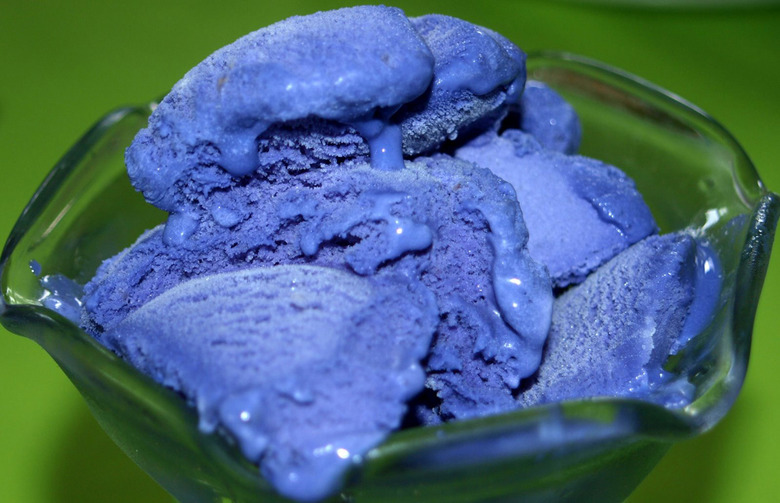What Ice Cream Looks (And Tastes) Like Around The World
What Ice Cream Looks (and Tastes) Like Around the World
No matter what your dessert preference is, we bet you like ice cream. In the United States, kids are hypnotized by the carefree jingle of the ice cream man's truck, and as adults, we wait in line for hours at artisanal ice cream parlors where flavors resemble dinner more than dessert. Ice cream has a fascinating backstory. Some hypothesize that Marco Polo brought back the recipe the Far East. Others believe Catherine de' Medici introduced ice cream to France when she married King Henry II. It was served at their wedding feast in Florence and he was hooked from then on.
Alaska
You'd think Alaska would be the place for the perfect ice cream cone. With below-freezing temps, why would anyone want it, thought? They do have a version of it, though, and it's called akutaq, or Eskimo ice cream. It's traditionally made with animal fat from seals, moose, and caribou, but modern recipes appreciate the invention of supermarket lard like Crisco. Seasonal toppings like salmonberries are still added, though.
France
Leave it to the French to turn something truly decadent into an over-the-top indulgence that will change your world. Foie gras ice cream is frozen duck liver turned into custard with wine, sugar, egg yolks, butter, and cream. You'll most likely find it in sandwich form between two freshly baked, soft gingerbread cookies.
India
Kulfi is a frozen dairy custard, popular in India, that is made with frozen, sweetened condensed milk. Regional ingredients and spics like cardamom, saffron, and mango are added for flavor.
Indonesia
If you prefer your ice cream to be dairy-free, then Indonesia has the puter for you. Translated as "stirred ice cream," puter is made from coconut milk, coconut meat, and sugar. It's gently stirred together to create a creamy custard and frozen to a soft consistency. It's commonly served atop a mound of black rice or with a side of toasted bread seasoned with peanuts.
Iran
Persian faloodeh is considered one of the first-known frozen desserts, dating back to 400 B.C. It can be a custard of egg yolks, cream, and sugar, but is sometimes made with rice or corn starch to resemble icy slush. In either recipe, the dessert is enhanced with seasonings, including saffron, rosewater, and pistachios.
Israel
Sesame seeds are smashed into a paste and mixed with honey to make halva in Israel. Popular on its own, halva is also used to create ice cream when combined with tahini paste, eggs, cream, and sugar. The mixture is frozen and served seasoned with pistachios and date syrup for the ultimate in texture and flavor overload.
Italy
Italian ice cream, or gelato, is thicker than soft serve but softer than the "hard" ice creams popular in the U.S. Gelato traditionally has a low milkfat content (less than nine percent), and is made with milk, sugar, and egg yolks. Churned to contain less air than ice cream, the creamy result is light and delicious. Popular flavors include stracciatella (milk flavored with chocolate ribbons), hazelnut, coffee, and Baci — the Italian answer to the Hershey's Kiss.
Mexico
The idea of fried ice cream is wonderful. In Mexico, scoops of ice cream are breaded with crushed tortillas and cinnamon and quickly flash-fried to create a crispy, warm crust. In the U.S., it's more common to find it sans the fry, as a scoop covered in seasoned crunchy stuff.
The Philippines
Bright purple-colored yams called ube are used to make grape-hued ice cream in the Philippines. Ube is a common ingredient in cakes, jellies, and cookies, so an ice cream made from the root vegetable is pretty common there, but would most likely confuse a Westerner.
Turkey
Ice cream in Turkey is called dondurma and resembles a wad of softened fondant more than ice cream. Stretchy and soft, it is made from milk, sugar, and the powered bulbs of wild orchids. The mixture is kneaded together and rolled into a giant mass that is stretched out and cut to create portions to serve atop a cone.











